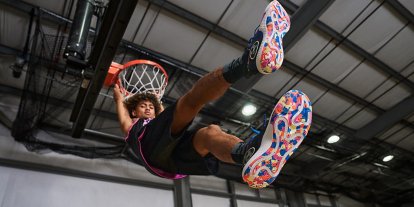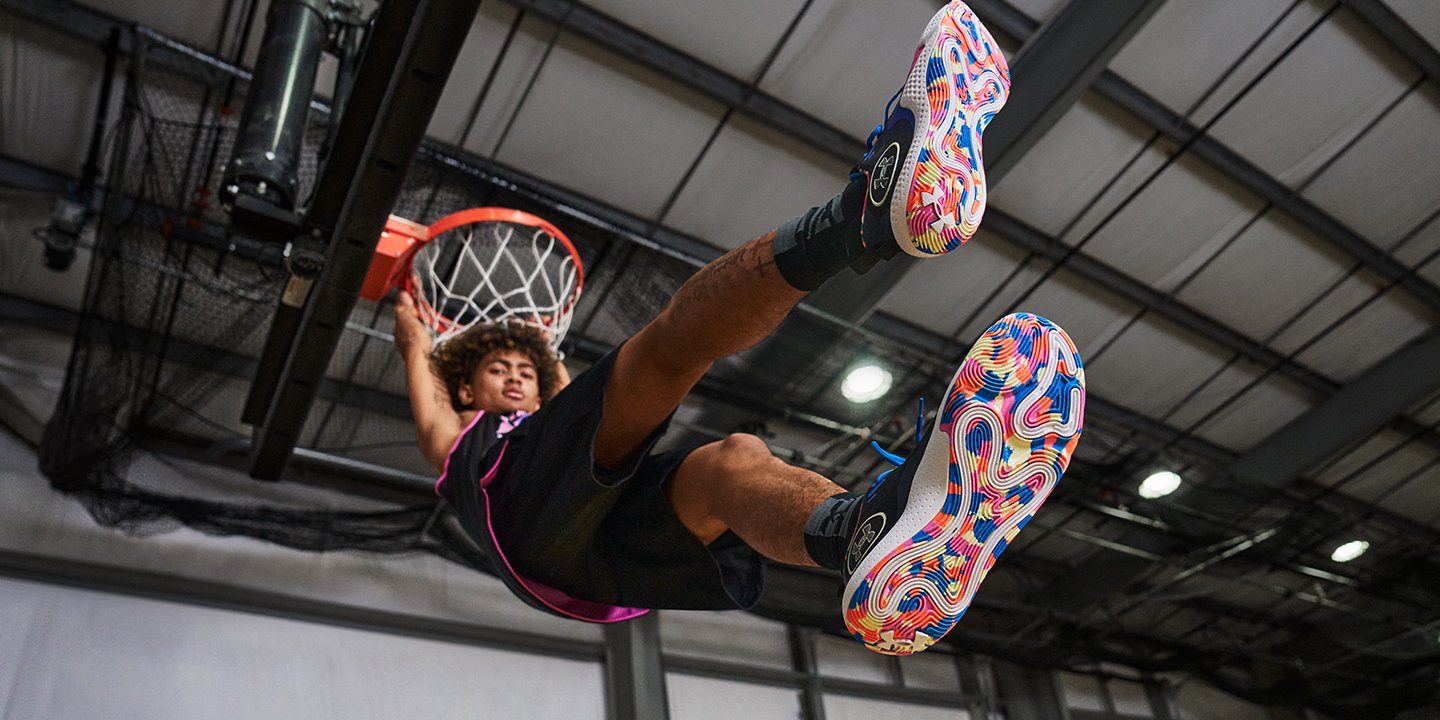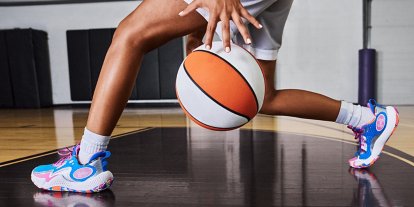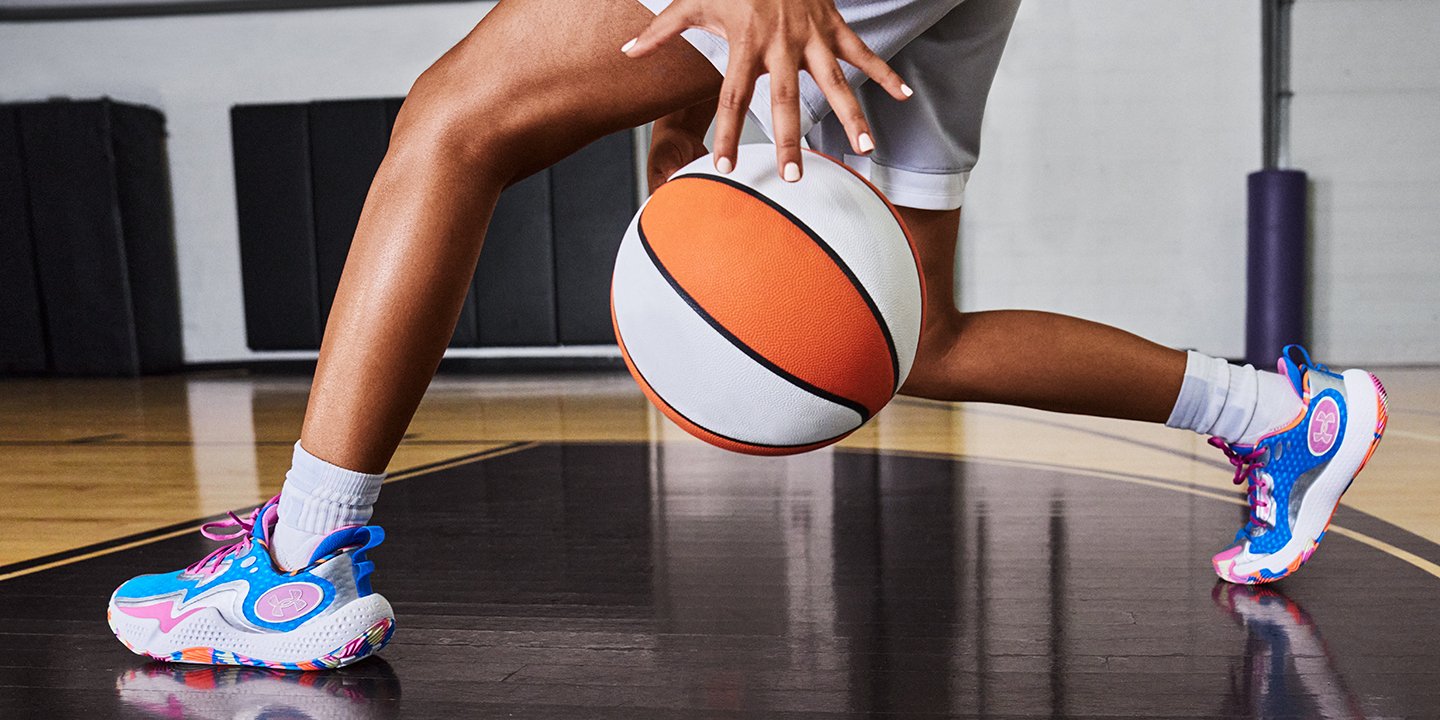How to Buy the Best Basketball Shoes
Basketball is a sport that involves quick footwork, sudden stops and starts, and lots of jumping. Because regular athletic shoes or sneakers are designed to support a steady running pace on pavement, they’re not well-suited to the movements of basketball players.
Basketball shoes are designed specifically for the kind of sudden, short bursts of movement the game demands. Like other athletic shoes, they’re lightweight and flexible, with lots of cushioning against impacts. However, their treads are designed for excellent grip on a smooth hardwood court. Their soles tend to be made of bouncy materials for extra lift when you jump.
When you’re buying basketball sneakers, it’s best to look for good traction, soft cushioning, and arch and ankle support. Here are some factors to consider when looking for the best basketball shoes.


What to Look for in a Good Pair of Basketball Shoes
Cushioning
Cushioning is important for shock absorption. It blunts impacts to reduce the pressure on your feet, ankles, and knees. Well-made shoes often have cushioning that returns energy, propelling you forward when you run and upward when you jump. Basketball shoes are often cushioned with a combination of air, gel, and foam.
Support
Basketball players are at a high risk of ankle injuries due to the high-impact nature of the sport. Basketball sneakers with strong support in the arches and ankles give you extra stability. Not only does this help prevent injuries, it also gives you leverage and balance, improving your performance.
Traction
Traction allows you to make quick cuts and stops without slipping. Basketball shoes typically have grippy soles with a herringbone or hexagonal pattern on the outsole for maximum traction. These patterns help distribute weight and pressure evenly, reducing the risk of slipping. Before buying a pair of basketball shoes, consider whether you’ll use them for indoor or outdoor play. Shoes for outdoor play tend to have a deeper tread pattern to improve traction on pavement, while those for indoor play have shallower treads that grip onto hardwood courts.
Breathability
Breathability is important because shoes that are too hot and sweaty can cause discomfort, blisters, and even athlete's foot. Breathable shoes help keep your feet cool and dry, which can improve comfort and reduce the chance of these issues.
Lightweight Construction
Basketball heavily emphasizes agility, speed, endurance, and jumping, so lightweight shoes are extremely important. Heavy shoes can slow you down significantly, decreasing your momentum and dragging down your jumps. Wearing heavy shoes can also increase fatigue over the course of a game. With lightweight basketball sneakers, you’ll be able to cut and pivot faster, jump higher, and keep going longer.
What Are Basketball Shoes Made Of?
Here are the key materials of basketball shoes:
Synthetic Leather looks and feels like real leather, but it’s lighter and more durable. Many basketball shoes use synthetic leather as the primary material.
Mesh is highly breathable and flexible. Many basketball shoes use strategically-placed mesh panels to improve airflow and mobility.
Foam provides cushioning and shock absorption. Some specialized foams also return energy to boost performance. Most basketball shoes have midsoles made of foam, as well as foam padding on the interior.
Rubber has excellent traction and durability. Most court shoes use rubber outsoles.
The Parts of a Basketball Shoe
Upper: This is the top part of the shoe that covers your foot. It can be made from materials such as synthetic leather and/or mesh. A synthetic upper may include features like overlays or perforations to provide breathability and support.
Tongue: The tongue is a flap of material that sits between the laces and your foot. It helps to protect the top of your foot from pressure caused by the laces. It’s often padded to provide a comfortable fit.
Laces: Basketball shoes typically have laces that allow you to adjust the fit of the shoe. Some shoes may also have a laceless design or use alternative closure systems like straps or zippers.
Collar: The collar is the part of the shoe that wraps around your ankle. It’s often padded for extra comfort and support.
Midsole: The midsole is the layer of material between the upper and the outsole. It provides shock absorption to cushion the impact on your feet and joints.
Outsole: The outsole is the bottom part of the shoe that comes into contact with the court. It’s usually made from rubber or a similar material that provides grip and traction.
Heel Counter: This is a stiff piece of material that sits at the back of the shoe and helps to keep your heel in place. It provides structure and support, and helps create a “locked-in” feeling.
Toe Box: The toe box is the front part of the shoe that covers your toes. It should be roomy enough to allow your toes to move comfortably, but not so loose that your foot slips around inside the shoe.
Insole: The insole is the cushioned layer that sits inside the shoe under your foot. It can provide additional padding and arch support, and may be able to be replaced with custom insoles if needed.
How Should Basketball Shoes Fit?
Basketball shoes should be snug, but not tight. They should have enough room for your toes to wiggle, but not so much that they slide around inside the shoe, which can cause blisters. Make sure that they have enough arch support and that your foot feels secure inside them. You shouldn’t have to lace your shoes too tightly to get a good fit. When trying on shoes, wear the same socks, wrappings, and ankle braces you plan to play in. Always measure your feet or try on shoes at the end of the day when your feet are slightly swollen to avoid getting shoes that are too tight.
Breaking in New Basketball Shoes
When you get new basketball shoes, they can be stiff, which can restrict mobility and cause discomfort or blisters. To improve their flexibility, it’s important to break them in before you play in them. You can do this by wearing them around the house for longer and longer periods of time. The typical break-in time for a new pair is about two weeks.
Taking Care of Basketball Shoes
Taking good care of your basketball shoes can improve their longevity. Keeping them fresh goes a long way, so it’s important to remove your shoes from your bag after playing to let them air out. When your court shoes get dirty, make sure to follow the cleaning instructions. Strong cleaning solutions can damage synthetic leather or rubber, so it is best to use a mild solution like laundry detergent mixed with water. Clean your shoes using a soft cloth, and remove any stubborn dirt or scuffs with an old toothbrush. Don’t wear indoor basketball shoes outside. Indoor shoes are designed for smooth surfaces like hardwood, and pavement or other rough surfaces can wear down their treads. This will reduce their ability to grip smooth surfaces, slowing you down and putting you at risk of slipping.
When to Replace Basketball Shoes
Even if you take great care of your basketball shoes, you’ll need to replace them at some point. There is no magic number for how often to replace your basketball shoes. Professional basketball players can go through up to 50 pairs a season, depending on their playing time. Think about a very general guideline of between 50-70 hours of practice or playing time for a pair of shoes. But really, what matters most is how often you play, how hard you play, the surface you play on, and your playing style. Monitor your shoes for damage by checking the outsoles for wear and tear. If the treads look worn down, they won’t have the same level of traction, and it’s time to replace them.
Here are some other signs it’s time to replace your basketball shoes:
- Visible damage on the outside of the shoe
- Discomfort or blisters
- New pain in your knees or ankles
If you notice any of these signs or experience any new pain or soreness, it’s time to replace your basketball shoes.

